
Photo: Official U.S. Navy photograph / M.W. Huntley, USN
Operation Deep Freeze
Joe Dobbratz ’51 is one of the select few BC alumni to have a glacier named for him. This is the incredible story of how it happened.
One afternoon in the middle of February, the phone in my office rang. I lifted the receiver and on the other end of the line was Joe Dobbratz, who informed me that he was 93 years old and had graduated from BC in 1951. He’d just finished reading our article about the greatest athletes in Boston College history and he had only one question: Had we lost our ever-loving minds? How was it possible that the great Lenny Ceglarski, who guided the men’s hockey team for twenty seasons, was not included on our list of BC’s best coaches?
Dobbratz ran through Ceglarski’s impressive accomplishments, and explained that the coach had been his friend during their undergraduate years at the Heights. From there, the conversation turned lighthearted, with Dobbratz recounting his time on campus, including the many hours that he and a guy named Shorty Cellucci spent in a pool hall taking money off an enormously tall center on the basketball team named Elmo Morgenthaler who thought he was pretty good with a cue. It was a delightful story and I regretted that I would have to check the whole thing out. After all, what were the chances that, more than seven decades later, this Elmo Morgenthaler character was truly as colorful as Dobbratz remembered?
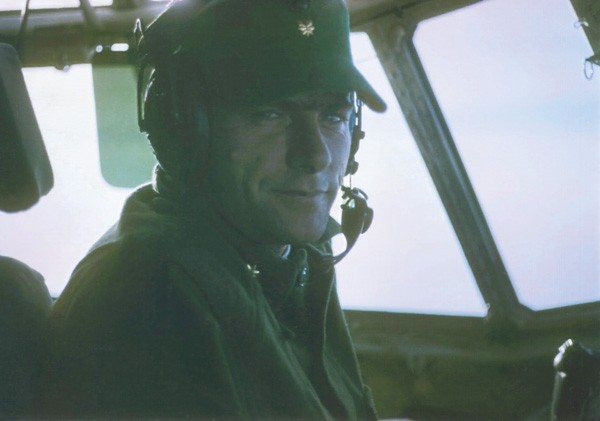
Quite good, as it happened. Morgenthaler graduated high school in Hobbs, New Mexico, worked on the railroad for a few years before starting his college basketball career at age 23, transferred to BC for part of a season, and then left to become one of the first 7-footers to play professional basketball, albeit briefly and without much distinction. All of which is to say that the Morgenthaler story was just the first in a long line of extraordinary things told to me by Joe Dobbratz that would turn out, somehow, to be entirely true. For instance, just before we hung up, he said, “Did you know there’s a glacier in Antarctica that’s named for me?”
By early 1962, Major Joseph R. Dobbratz, Jr. was a decorated fighter pilot in the middle of a most unusual Marine Corps career. He was an expert in the air, combat-tested and unflappable, and he had taken advantage of the less rigid structure in those earlier days of Marine Corps aviation to pilot an astonishing assortment of aircraft, something like nineteen different airplanes, jets, and helicopters. “I don’t know of anybody who flew as many different types of aircraft—it’s unbelievable,” said Mike Hoeferlin, who served under Dobbratz as a public affairs officer before becoming a Marine Corps aviator himself.
What also set Dobbratz apart was that, even while exhibiting the spirited independence you want in a fighter pilot, he had distinguished himself as a military officer and leader. In fact, he is one of just a handful of aviators to ever command a Marine training battalion at Parris Island, where recruits go through boot camp. “That was almost unheard of for an aviator,” Hoeferlin told me. “But he was hand-selected to do what he does best, and that is to motivate, lead, and make things work properly.”
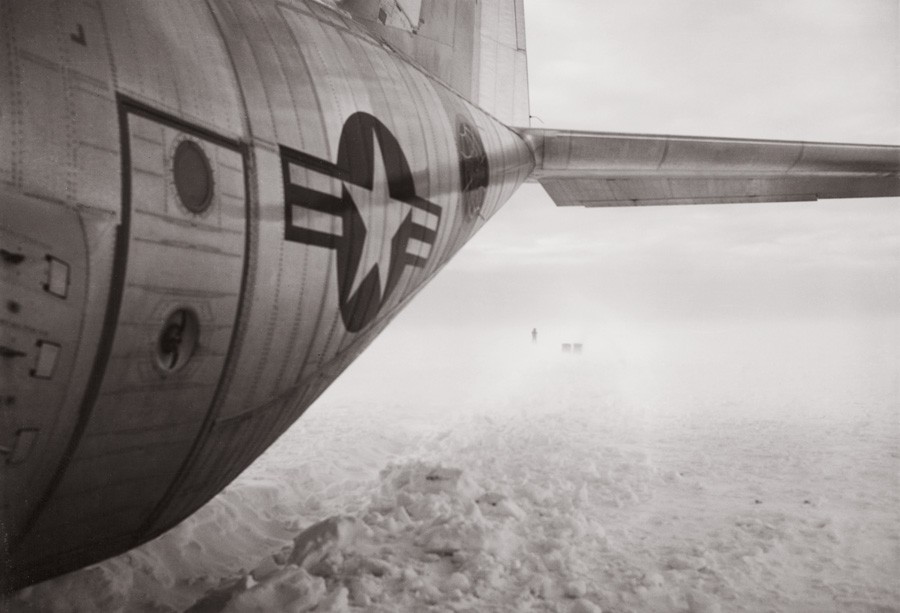
Dobbratz flew the C-130 Hercules to research stations throughout Antarctica. Photo: Courtesy of Joe Dobbratz
Dobbratz’s reputation was growing at a time when the military was on the hunt for pilots to participate in Operation Deep Freeze, a series of scientific explorations into Antarctica that had begun in 1955 (and would run through several phases until 1998). Deep Freeze researchers were a band of courageous academics who endured severe conditions while documenting everything from Antarctica’s geography, weather systems, and circumpolar ocean pattern to how the continent had been shaped by plate tectonics and glacial movements. But someone had to make it possible for these researchers to do their work. So the operation also included military personnel charged with, among many other things, building and maintaining bases and transporting the academics and their supplies to and from various research stations. And owing to Antarctica’s harsh terrain, much of that transportation took place via airplane. It was incredibly challenging aviation that required learning to fly a massive cargo plane equipped with skis that enabled it to take off and land in untended snowfields. There were occasional whiteouts—in which it became virtually impossible to distinguish the sky from the ground—and once in a while an ice fog that could suddenly cover a plane with thick ice while it was just a couple hundred feet off the ground, which, as you might suspect, is life-threateningly dangerous. There was also the requirement to live in Antarctica during the six months of the year when the sun shines, all while overseeing a team of twenty or so recruits fresh out of boot camp.
So that was the kind of pilot the military brass were looking for, and with his combination of aviation and leadership skills, Dobbratz seemed perfect. But would he want such a demanding and perilous assignment? “They called me from Marine Corps headquarters and asked me if I wanted to go to VX-6, which was the Navy experimental squadron based out of Rhode Island that went to the ice,” Dobbratz recalled. “I said sure.”
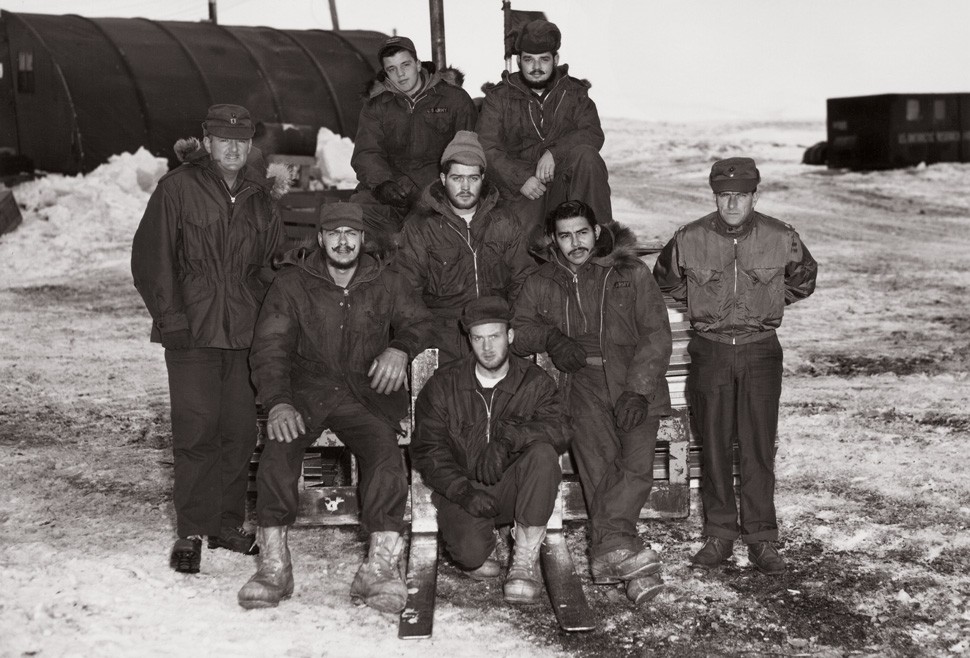
Dobbratz, far right, stands with the cargo crew he oversaw while in Antarctica. Photo: Courtesy of Joe Dobbratz
Joe Dobbratz was born in 1927 at St. Elizabeth’s Hospital in Brighton. “Do you know where that is?” he asked me this past summer, his Boston accent still pronounced after forty-plus years in the South. I was sitting across from him in the living room of the home that he and his wife, Catherine—who is known to everyone as Dinksy—built back in the 1980s in a golf course community near the Marine Corps air station in Beaufort, South Carolina.
St. Elizabeth’s is just a mile or so from the house on Kenrick Street where Dobbratz and his three sisters grew up. Their mother, Mary Ellen, worked for the MBTA as a subway cashier, while their father, Joe Senior, was an auto mechanic who’d started out as a blacksmith shoeing horses. The family home was located next to Chandler Pond and across from the old Cenacle Convent, where Dobbratz served as an altar boy. From an early age, he was drawn to airplanes. He would walk to the top of the hill where the convent stood and launch toy planes made of balsa wood. “We’d fire them around until they got banged up, and then patch them back up,” he recalled. “I was just fascinated with planes. I used to have all these cards that came from Czechoslovakia—they were like baseball cards but for planes.”
Dobbratz graduated from high school in 1945, not long after VE day. An end to World War II may have been in sight, but the conflict was still months from its conclusion, so Dobbratz applied to every branch of the military. The Coast Guard was the first to respond and he immediately signed up. He learned to repair diesel engines, tended to buoys in Boston Harbor, and took care of a boiler on a ship that was so old the boiler was made of fire brick. But he was discharged in May 1946, less than a year after enlisting. “They didn’t need us anymore,” he recalled. Fortunately, he qualified for the GI Bill, which was the only way he could contemplate going to college. His parents certainly couldn’t afford it. To cover emergency expenses, his father depended on trading his skills as a mechanic. “He would more or less barter—like fixing this tooth right here?” Dobbratz said, raising an index finger to one of his front teeth. “It got knocked out playing hockey. My father paid the bill with a tune-up for the dentist’s car.”
Dobbratz enrolled at BC in 1947 and studied business administration. As graduation neared in 1951, he discovered that, because he’d served for less than a year in the Coast Guard, he would be required to register for the Korean War draft. Instead, on the day after commencement, he enlisted in the Marine Corps. “I joined, Lenny Ceglarski joined. There were fourteen or fifteen of us from BC that all joined up at the same time,” he said.
After enlisting, Dobbratz was sent to basic training and then to officer candidates school. From there he hoped to go to flight school but instead he was sent to El Toro, a large Marine base, since decommissioned, that was located near Los Angeles. There, as a brand-new second lieutenant, he was given his first command. “I picked up a platoon of master sergeants, with a combined years of experience in the thousands,” he recalled. “Deep down, I felt like they knew more than I’d ever know.” But when the platoon boarded the USS Breckinridge in San Diego and set course for Yokosuka, Japan, Dobbratz was undeterred. Three days out, he ordered a rifle inspection. He was not pleased with the rust that he found. “I told them, I want those damn things cleaned and oiled.” When the next review left him equally disappointed, he scheduled six straight days of inspections, three times a day. “They got the message,” he said.
After being promoted to captain, in 1955, Dobbratz at last got his opportunity to fly when he was sent to the naval air station in Pensacola, Florida, for flight training. On his third solo flight, he lost the engine. Relying on his training, he quickly identified a field suitable for an emergency landing and brought the plane down. “I had that sucker made,” he said, “but the tail caught on a barbed-wire fence in the field.” Dobbratz struck his head on impact but escaped with little more than an injured shoulder. Still, the engine malfunction was just the latest frustration at Pensacola. Dobbratz had spent nearly a year at the base but hadn’t been able to complete the flight certification course. There simply weren’t enough instructors, planes, or parts. But around this same time, the Marines had begun incorporating a new type of aircraft. “Helicopters were kind of a new thing,” he recalled. “They said that anybody that goes helicopter would get their wings in two months. So I went helicopters.”
Stepping out of the plane and into a cold unlike anything he’d experienced, Dobbratz reminded himself of the warnings to be cautious while using his jacket zipper lest it freeze to his face.
After finally earning his wings, Dobbratz was sent back to El Toro, where he became a pilot in an HRS helicopter squadron. The HRS choppers, he quickly learned, were plagued by transmission problems. “We used to call them the one-lungers,” he said, “because just about every other time you took one out, you lost a cylinder and you would come back smoking like you were on fire.” In 1956, the squadron joined a fleet on maneuvers in the Pacific. As the fleet neared Bangkok, the helicopters began taking off from a carrier to fly ashore. The first helicopter left without incident, but the second lost its transmission at takeoff and the pilot had to immediately return to the deck. Dobbratz went next and made it out over the water before he, too, lost his transmission. With just seconds to respond, he once again fell back on his training. “What you had to do was land it in the sea, and then you roll it on the side to break the rotor blades,” he recalled. “But you have to roll it to the left. You have to remember that, because the cargo door is on the right.” Dobbratz and his crew of three all made it out of the helicopter uninjured and were rescued by boat. A month later, when the squadron was in Hawaii, Dobbratz’s helicopter once again lost its transmission, and he was forced to ditch in the ocean. And once again everyone aboard emerged unscathed.
Later in 1956, Dobbratz transitioned out of helicopters when he was sent to Corpus Christi, Texas, for advanced jet training. He started out on the TV aircraft and then moved up to the F9F-2. After earning his second set of wings, this one for jets, he found himself over the next few years piloting the FJ Fury and F8-Crusader with the VMF-122 fighter squadron. Then he was assigned to Cherry Point, North Carolina, to fly the R4Q2, a transport plane known as the Flying Boxcar. That’s where he was when he made major, and when he received the surprise phone call from Marine Corps headquarters: Did he want to go to the ice?
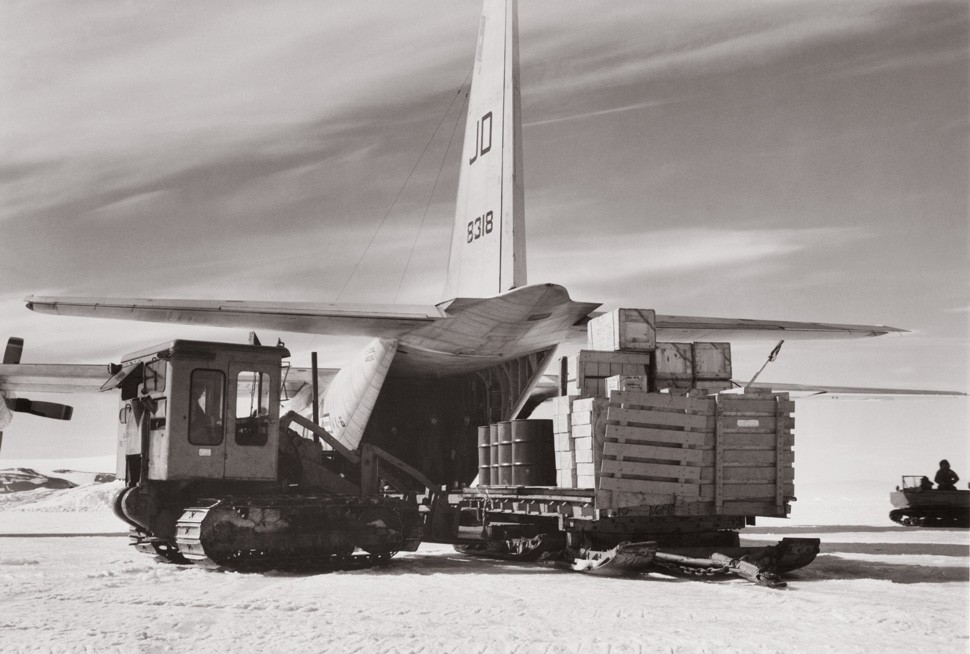
The C-130 Hercules is loaded with supplies that will be delivered to a research station. The cargo has to be carefully arranged to avoid dangerous shifts mid-flight. Photo: Official U.S. Navy photograph / Tom J. Taylor, USN
Unlike its polar opposite the Arctic, which is an ocean surrounded by continents, Antarctica is a continent surrounded by ocean. It is the coldest region on Earth, with temperatures in some areas having been recorded below minus-90 degrees centigrade. Snowfall, however, is actually quite light, meaning that what past explorers have described as the great Antarctic blizzards were actually high winds whipping ground snow into blinding storms. The discovery of Antarctica is credited to Russian explorers in 1820, though humans wouldn’t pass the first winter there until nearly eighty years later.
For its part, the U.S. military has long been interested in Antarctica, with Admiral Richard Byrd establishing a naval base in 1929, and then leading a series of expeditions into the continent over the next two decades. The Navy later launched Operation Deep Freeze, in 1955, as part of a multi-nation research effort known as the International Geophysical Year.
Deep Freeze was in its seventh year when Joe Dobbratz signed on. Several research stations had been constructed in Antarctica, and it was part of the military’s job to keep them connected and supplied. After provisions and equipment were brought in via cargo ships following ice breakers, the supplies were loaded onto planes that would fly them to the research stations. An array of aircraft were used for the deliveries, including some that depended on runways made of ice and snow. But such landing strips weren’t possible at all of the stations, or in the areas where research was being conducted by smaller field parties. For this reason, the Navy had begun using a versatile new plane for Deep Freeze, one that could take off and land in untouched snowfields. The C-130 Hercules was an enormous four-engine turboprop that was outfitted with skis and could accommodate jet boosters on the rear of the fuselage for extra power during takeoffs in especially deep snow. So before Dobbratz could depart for Antarctica, he first had to spend a month in Tennessee learning to fly the C-130. After mastering the plane, he and his crew departed Rhode Island in September 1962 and began the long flight to Antarctica. The route required stops in California, Hawaii, Kanton Island (a tiny isle in the middle of the Pacific), Fiji, and New Zealand, but the trip itself was quite pleasant. “I used to call the C-130 the gentleman’s airplane,” Dobbratz said. “Big old seat, and after the plane took off, you put your hand out and you got a cup of coffee from the crew chief. They also had a way of jury-rigging something similar to a microwave. So about two hours out, you got steak and eggs.”
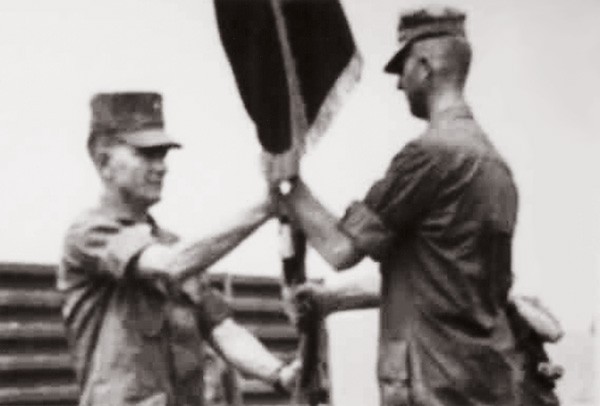
Lt. Colonel Joseph R. Dobbratz, left, passes squadron colors of the HMM-364 “Purple Foxes” to Lt. Colonel Merlin V. Statzer in 1968. Photo: Courtesy of Joe Dobbratz
After landing in Antarctica, Dobbratz stepped out of the plane and into a cold unlike anything he’d experienced. Wincing as the frigid air hit his lungs, he reminded himself of the warnings he’d been given to use caution while zipping his jacket. “They said, particularly, don’t zip it up to your face,” he recalled, “because it will stick to your face.” The very next day, Dobbratz and his crew got to work, flying about 200 miles to reopen two weather stations that had been shut down for the winter.
Even the most routine flight in Antarctica can test the skill of an excellent pilot—“Experts generally agree the continent has some of the most dangerous flying conditions in the world,” said Mike Hoeferlin, the former Marine pilot, who has written about Dobbratz’s time in Antarctica for the Marine Corps magazine Leatherneck. So prior to each takeoff, Dobbratz would carefully supervise the loading of the plane, making sure that weight guidelines were strictly followed, and that cargo was placed in a way that it wouldn’t shift while in the air. Once properly loaded, the C-130 would take off from Williams Field, a runway built on an ice shelf that was located about five miles from Deep Freeze’s main base of operations, McMurdo Station.
Finding his way while in the air required an onboard navigator who used maps, a compass, and a simple radar system to guide the plane to its destination. “We used landmarks that the radar would pick up,” Dobbratz explained. On the 700-mile flight to Byrd Station, for example, “we took off and the first thing we’d pick up was the Duty Crack, which was a crevasse that was four or five miles wide and about a hundred miles long. On the radar screen, you could see the snow and then the crevasse was black.” Next, the radar screen would display an image that always reminded Dobbratz of one of those steer skulls found in the deserts of a Hollywood Western, and then came the landmark that looked like a drive-in movie theater viewed from above. At that point, Dobbratz knew he was close. He and his crew made flights nearly every day, so I asked whether he eventually developed a sixth sense about how to get to his various destinations. “If you fly by your sixth sense, you’re dead,” he replied. “You rely on the navigator and the instruments.”
Even the most routine flight in Antarctica can test the skill of an excellent pilot, as experts generally agree that the continent has some of the most dangerous flying conditions in the world.
Flights to South Pole Station could be especially tricky. After landing there, Dobbratz had to leave the plane running because it was so cold that the C-130 wouldn’t have restarted had he shut it down. So the crew had to factor in enough fuel to keep the plane idling on the ground for a half-hour while it was unloaded, and still be able to make it back to Williams Field. The station was also where Dobbratz came the closest to catastrophe while in Antarctica. He was less than 200 feet above ground during a landing one day when he brought the plane through what appeared to be an unremarkable patch of fog. “But I came through it and, bingo, that thing covered the plane with ice,” he said. “It could have been disastrous but I was fortunate to be able to land.” Then there were the whiteouts, in which the sun and the snow on the ground combined to obscure the horizon. “The only way I can describe it is like flying in a milk bottle,” he said. “It was just white. So you just set up a rate of descent of 250 feet per minute until you hit the ground, and you hoped that you hit it right.”
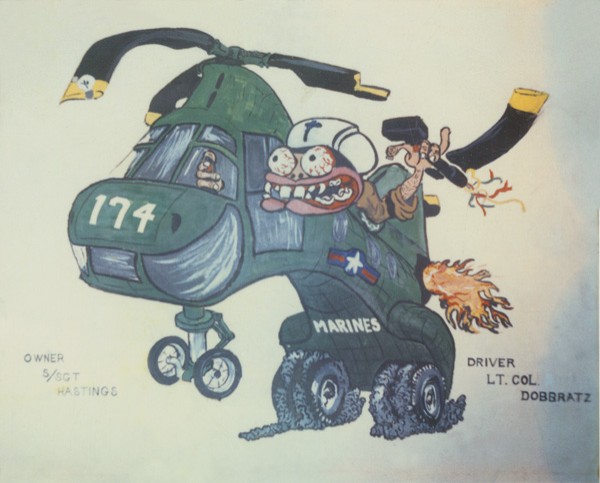
A cherished caricature, drawn by a Marine who served under him, depicts Dobbratz’s time commanding the Purple Foxes. Photo: Courtesy of Joe Dobbratz
Most landings were more predictable. Dobbratz would touch down in a snowfield and then execute a U-turn in order to drive back over the same tracks he’d just left, packing the snow enough to aid the ensuing takeoff. “But sometimes that wouldn’t work,” he said. “Sometimes we’d be picking up people from the research program—out in the middle of the mountains or somewhere else with difficult terrain—and at takeoff your nose wheel would become a snowplow, and you couldn’t get it up.” In these conditions, he would hit the small jet boosters attached to the body of the plane. “Then you hit the flaps,” he said, “and usually the nose wheel would come up and you’d take off.”
In 1964, Dobbratz’s time in Antarctica came to an end after his second six-month assignment. All told, he’d logged 800 or so hours of flight time in some of the most treacherous flight conditions on the planet, and he never had an accident. It was quite an accomplishment, and one, as he would learn many years later, that did not escape the notice of his passengers.
Upon returning from Antarctica, Dobbratz enrolled at the U.S. Naval War College in Newport, Rhode Island. He graduated in 1965, and then it was off to Parris Island, where he became one of the few aviators to ever command a battalion of Marine recruits. It wasn’t long, though, before he was back in the air, and back in choppers.
In 1968, Dobbratz was sent to Vietnam. “I got a command,” he said. “It was a helicopter transportation squadron.” That’s how he described the HMM-364. Ike Bullard, who served under Dobbratz in the squadron, described it this way: “I tell people today and they sit there with their mouths open—You were a Purple Fox in Vietnam? It was one of the most decorated units in the history of the Marine Corps.”
Dobbratz’s squadron included twenty-four CH-46 Sea Knight helicopters and thirty-eight pilots, most of them right out of flight school. They transported troops all over Vietnam, getting Marines into and out of combat areas and conducting medical evacuations. The choppers regularly took fire while in landing zones, so the pilots tried to limit their time on the ground to fifteen or twenty seconds. The Marine Corps generally preferred that its squadron commanders stay out of the action, but Dobbratz insisted on flying missions nearly every day. “There were some commanders over there that just flew ‘desk’—they didn’t go out and fly with their squadron,” Bullard said. “But if we were doing it, he was going to do it. So he got out there with us and flew some pretty hairy missions himself.”
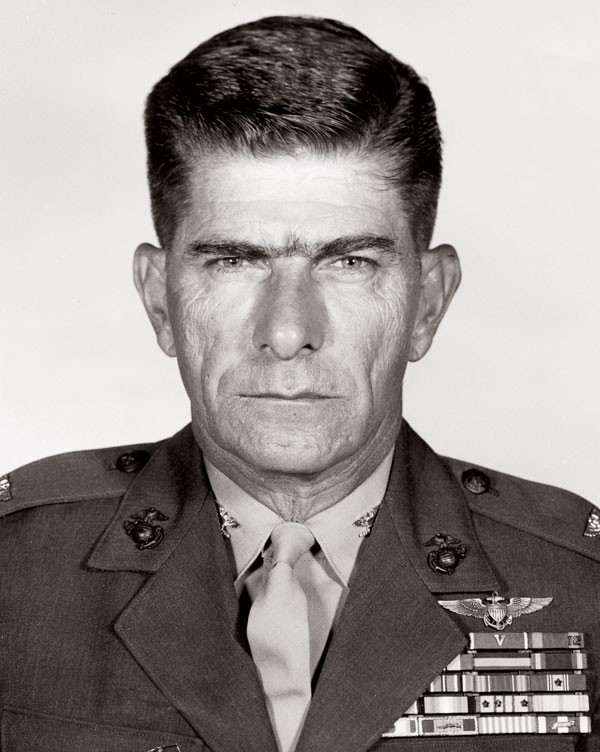
Dobbratz photographed in 1981 while serving as chief of staff to the top general at Marine Corps Base Quantico. Photo: Courtesy of Joe Dobbratz
It’s another memory of Dobbratz that has remained with Bullard for more than fifty years, however. In the fall of 1968, Bullard and a copilot landed in a combat zone to extract troops. A wounded Marine had to be helped aboard, which kept the helicopter on the ground for nearly a full minute. “I knew we were going to start taking fire,” Bullard said. When the shooting began, ten rounds hit the chopper, one of them passing through Bullard’s leg. The chopper made it out with everyone safely on board, but Bullard was seriously wounded. He was transported to a hospital in Da Nang and was awaiting transport back to the States when, suddenly, Dobbratz walked through the door. Bullard declined to reveal what Dobbratz said to him. “It doesn’t matter,” he said, his voice filling with emotion. “What matters is I’m just this little-old lieutenant and he flies an hour to come spend some time with me after I’ve been wounded. And then, he wrote me a two-page letter thanking me for the contributions to the squadron. He cared enough to do that.”
After a year in Vietnam, half of it as commander of the helicopter squadron (the Marine Corps insisted on rotating in a new commander every six months), Dobbratz was transferred in 1969 to the Marine air station in Beaufort, South Carolina, where he eventually became second in command. Dinksy, his future wife, was working at the time as the commanding officer’s secretary. Her husband had been killed a few years earlier in a hunting accident, leaving her to raise three young children on her own. Dobbratz and Dinksy began to spend time together and soon fell in love. “Joe has more integrity than any person I’ve ever known in my life,” Dinksy told me. “When he says something, he means it. That’s how everyone feels about him.”
The couple married in 1971, and from the beginning, Dobbratz embraced his role as a father to the three children, Matthew, Bill, and Catherine. He was strict but also loving. “My biological father died when I was 6,” Bill told me, “but Joe Dobbratz, he came in and he became my daddy. He was very involved with all of us. He did a phenomenal job.” Not long after the marriage, Bill told his new father that he wanted to take his name and become a Dobbratz himself. If he still felt that way when he turned 18, Dobbratz told him, then he would be honored to have him carry his name. Bill Dobbratz did just that and, many years later when his own son was born, the boy was given the name Joseph Dobbratz.
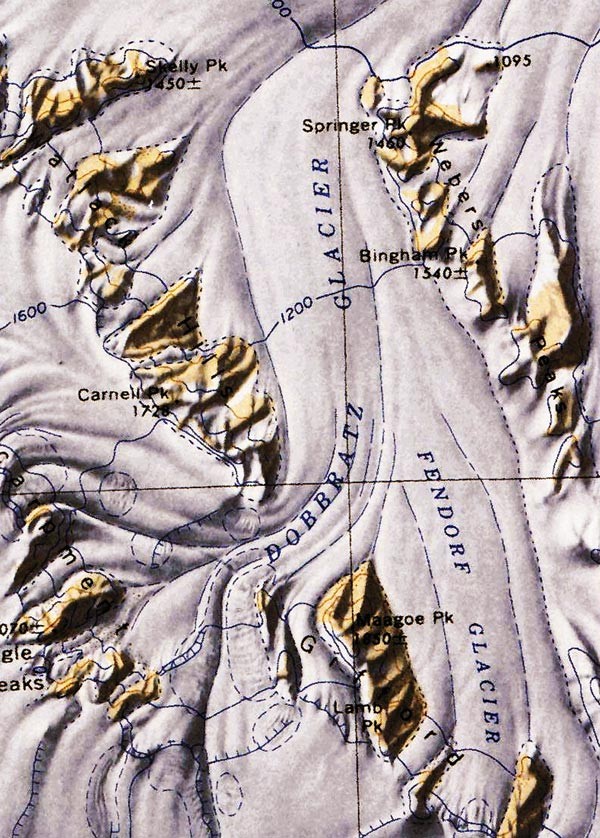
Dobbratz Glacier is a broad tributary glacier located in the Heritage Range mountains of Antarctica. Map: Courtesy of Mike Hoeferlin
The year 1971 turned out to be a pivotal one for Dobbratz. In addition to getting married, he was promoted to colonel and transferred to the Pentagon. He and the family moved north and Dobbratz began working in the amphibious warfare division. It was a desk job—the higher up you went in the Marines, the less you seemed to get to fly—but “sometimes it was fun,” he recalled. “I guess I shouldn’t say this,” he added with a conspiratorial chuckle, “but I was like a spy for the Marine Corps, to make sure we kept all our assets rather than have the Navy take them. And that’s as far as I’ll say.”
Dobbratz was still at the Pentagon in December 1973 when a mysterious letter from the Office of Polar Programs at the National Science Foundation arrived by mail one day. It had been nearly a decade since he last set foot in Antarctica, so he was astounded when he opened the letter and discovered that researchers from the University of Minnesota had been so impressed by him during their time on the continent that they’d worked to have a glacier they discovered named in his honor. “It gives me a great deal of pleasure,” the letter read, “to inform you that the U.S. Board on Geographic Names has named in your honor the geographic feature Dobbratz Glacier located at 79 24’ S. latitude 85 05’ W. longitude in the Heritage Range of the Ellsworth Mountains, Antarctica.”
Dobbratz told me that he wasn’t sure he deserved the recognition, but he conceded that it meant a great deal to him. “I am proud of that,” he said. “I’m not afraid to admit it.” It was the only time I ever heard him acknowledge pride in an accomplishment.
In 1974, Dobbratz was sent to Japan, where he served as commanding officer of the Marine Wing Service Group of the 1st Marine Air Wing. A year later he was assigned to the Quantico Marine Corps base, in Virginia, where he eventually became chief of staff to the base’s top general. He retired in 1981 at age 54, and he and Dinksy returned to Beaufort.
You may have noticed that the many instances of Dobbratz’s extraordinary aviation that are described in this article—a successful crash landing following the loss of an engine; two helicopter ditches, necessitated by mechanical malfunctions, in which everyone emerged unscathed; taking off and landing while under fire in combat zones; and hundreds of hours spent flying in Antarctica’s dangerous conditions—are presented rather stoically. That’s because, for the most part, that is what I was able to get from Dobbratz. When I asked him questions such as what it felt like to pilot an aircraft to safety during a panic-inducing emergency, he would simply reply, “I never thought about it. That’s how we were trained to do it, and that’s how I did it.”
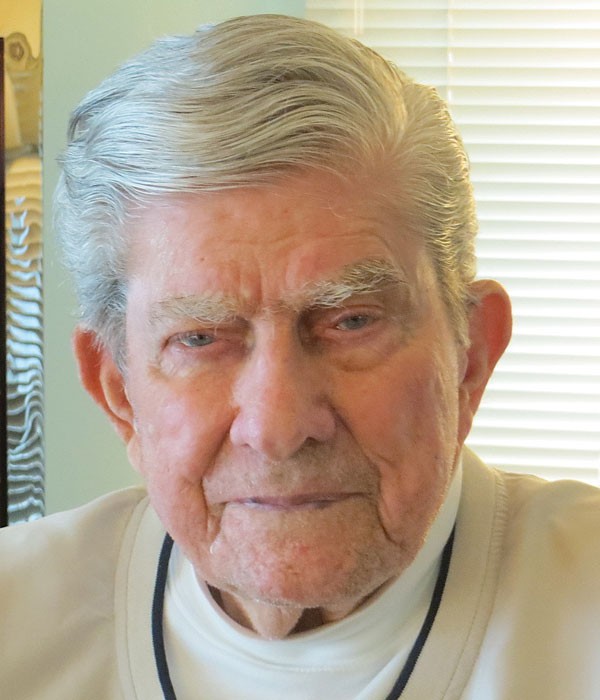
Dobbratz photographed this year at his home in Beaufort, South Carolina. Photo: Courtesy of John Chubb
Fortunately, we have his son, Bill Dobbratz, for a bit of context. The younger Dobbratz was himself a Marine Corps aviator for nearly eleven years, and he’s been a FedEx pilot for the past quarter-century. “I don’t know how he did it,” Dobbratz said of his father’s career. “I don’t know anybody that goes, Hey, well, I crashed an airplane. Let’s go fly again. Most guys back off. But he kept going and going. When they used to fly to Antarctica—when they left New Zealand, I mean they were Captain Cook 200 years ago. They were just blasting off down to the south. I can’t imagine taking sun shots or star shots to figure out where they were—heading for a tiny spot down on Antarctica. If something bad had happened, there’s no one to come get them. That’s a different breed of cat right there. They’re the greatest generation. No if, ands, or buts about that.”
But Joe Dobbratz would have none of it. “I think that there are some exceptional fighter pilots and there were some average ones like me,” he insisted. “But generally speaking, an aviator is an aviator, particularly a naval aviator. You’re all trained by the same people to do the same things.”
“That’s just the way he is,” said Mike Hoeferlin, the Marine aviator who has written about Dobbratz. “He brushes it off as, ‘Oh, I was just doing my job.’ I mean, what they were doing, it was incredibly difficult. He was an amazing pilot, and he was an amazing leader. It was a perfect match, him having the Marines and the Marine Corps having him.” 


 print
print mail
mail